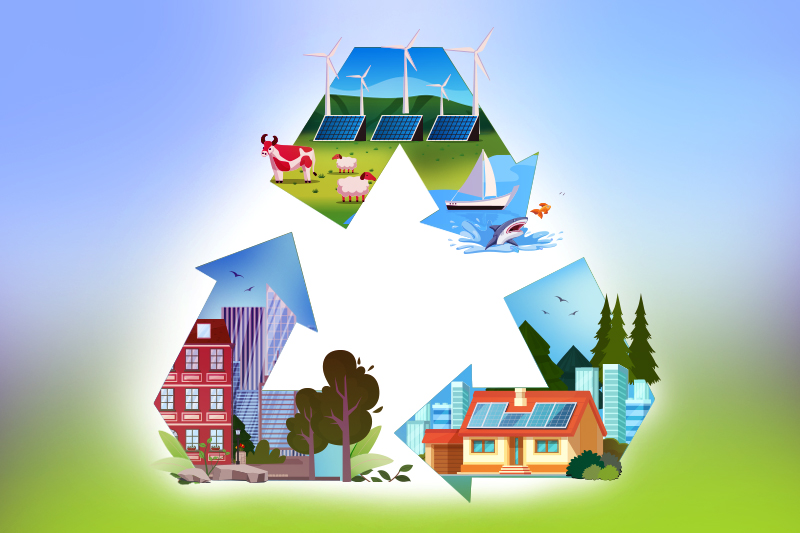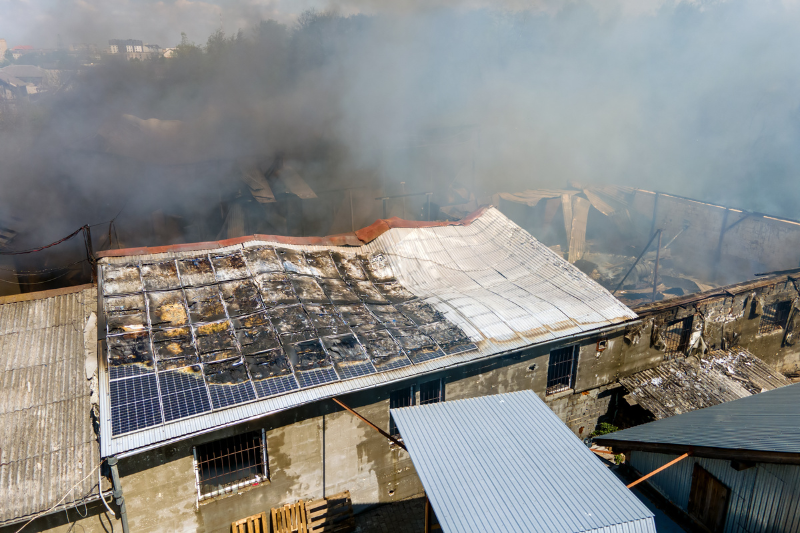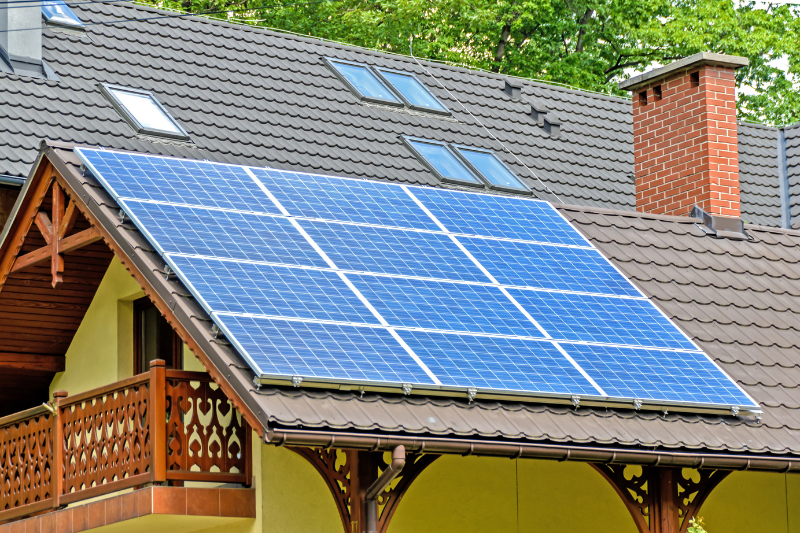What happens when solar panels reach the end of their 20 to 30-year lifespan? But without just throwing the panels away, you can properly recycle them. The emerging solar recycling sector has gained significant traction.
Consequently, citizens and researchers are adopting innovative methods to recycle solar panels in Australia.
Over 80 per cent of a standard solar panel includes easily recyclable materials, such as glass and aluminium. Inverters and racking equipment can also be recycled. Inverters can be recycled as electronic waste.
Solar panels also have materials like silver, copper, and crystalline silicon. These can be particularly challenging to take apart. Recycling these precious components is essential in fostering a circular economy.
Growing Issue of Solar Panel Recycling
The fast expansion of the solar energy sector created a growing volume of expired solar panels.
According to estimates from the International Renewable Energy Agency (IREA), the total waste stemming from solar panels is projected to soar to 78 million metric tons by 2050. It presents a significant environmental challenge if not managed properly.
Solar panels typically contain various materials, encompassing metals, glass, and semiconductors like silicon.
While these parts can be recycled, the need for efficient and effective recycling methods has posed a significant issue in handling solar panel end-of-life scenarios.
Is it Possible to Recycle Solar Panels?
Solar panels can be recycled. They contain various materials, including glass, aluminium, silicon, plastic, and copper. Recycling typically involves crushing, shredding, and milling the panels, then separating the various materials.
The glass can produce new solar panels, while the aluminium can be repurposed to create new frames and other items. Silicon is instrumental in making new solar cells, and the plastic and copper can be repurposed to have fresh products.

In Australia, up to 17% can be recycled. The most commonly recycled components are the aluminium frame and junction box.
Nevertheless, there is a growing interest in the recycling of solar panels. The government of Victoria, for instance, has prohibited the disposal of solar panels in landfills, and other states are contemplating similar measures.
As the demand for solar panel recycling grows, innovative technologies are being developed to enhance the efficiency and cost-effectiveness of the recycling process.
Emerging Technologies on Solar Panel Recycling
Preliminary treatment
Mechanical fragmentation
Chemical Recycling Process
Safe disposal
Enhanced Sorting Techniques
The initial stage of recycling involves separating the various components of solar panels. Advanced sorting technologies, like precise imaging and robotics, provide precision and speed up material separation.
These technologies employ advanced algorithms and sensors to identify and categorise different solar panel parts swiftly, streamlining the recycling process.
Benefits of enhanced sorting techniques include:
- Less manual labour and fewer errors
- Enhanced accuracy in sorting, leading to increased recycling efficiency
- Excellent recovery rates for valuable materials
Efficient Disassembly Methods and Robotic Dismantling Process
Dismantling solar panels can be a labour-intensive and time-consuming task. Innovative machinery has been developed to automate and fasten disassembly operations to overcome these challenges.
Robotic arms with specialised tools can efficiently remove essential components like glass, metals, and semiconductor materials.
The advantages of efficient disassembly techniques include:
- Lower labour costs and disassembly time
- Reduced risk of damage to valuable components during manual removal
- Increased recovery rates of key materials for reuse
Laser Decapsulation
Feature: Laser decapsulation is a non-destructive method that removes the protective coatings of solar panels, enabling easy access to valuable materials.
Advantages:
- Precise removal without damaging underlying components
- Increased recovery rates and material purity
- Reduced energy consumption compared to traditional methods
Data-driven Optimization
Feature: Integration of data analytics and machine learning algorithms in recycling machinery allows for real-time optimisation and continuous improvement in the recycling process.
Advantages:
- Identification of process inefficiencies and areas for improvement
- Improved material recovery rates and quality
- Increased productivity and reduced downtime
Advanced Recycling Technologies
Recycling the materials extracted from solar panels requires advanced technologies to recover valuable resources effectively.
Cutting-edge recycling machinery employs innovative methods like thermal and chemical processes to separate and purify raw materials such as silicon, silver, and aluminium.
These advanced recycling technologies offer numerous benefits, including:
- Higher purity and quality of recovered materials
- Reduced energy consumption during the recycling process
- Enhanced resource efficiency through material re-utilisation
Benefits of Solar Panel Recycling in Australia

Resource Reclamation
Solar panel recycling enables the recovery of valuable materials like silico-aluminium and aluminium, reducing the necessity for extracting these resources from the Earth.
This practice safeguards natural resources and decreases the environmental toll associated with mining activities.
Energy Efficiency
Solar panel recycling consumes significantly more than manufacturing new panels using raw materials.
According to findings from the National Renewable Energy Laboratory (NREL), recycling silicon-based solar panels can cut energy consumption by up to 95% when co-producing the production of new ones.
Sustainable Production
Economic Opportunities
The recycling industry fosters new economic prospects by generating employment and championing a circular economy.
As per data from the Solar Energy Industries Association (SEIA), solar panel recycling can generate 25–30 jobs for every 1,000 metric tons of panels recycled.
Solar Recycling Environmental Impacts
Proper disposal and recycling of solar panels mitigate potential environmental risks and comply with regulatory guidelines.
Recognising the importance of sustainable waste management, governments and organisations worldwide are implementing stricter regulations for solar panel manufacturers and users.
In conclusion, the rapid growth of the solar energy industry needs parallel advancements in solar panel recycling machinery.
Companies can boost efficiency by implementing enhanced sorting technologies, efficient disassembly techniques, and advanced recycling technologies while minimising the environmental impact of solar panel disposal.
According to industry reports, the global solar panel recycling market is projected to reach $327 million by 2025, growing at a compound annual growth rate (CAGR) of 20.5%.
Furthermore, it is estimated that by 2050, the waste generated from expired solar panels may reach 78 million metric tons.
The Potential Significance of the New Process
The newly developed recycling method for solar panels carries the potential to enhance the sustainability and affordability of solar energy.
This technique can reduce the production costs of new solar panels by reclaiming valuable materials from older ones.
Furthermore, it can decrease the environmental impact of solar energy by minimising the volume of waste that must be managed.
As solar energy continues to assume a central role in the global shift towards cleaner and more sustainable energy sources, it becomes increasingly crucial to address the environmental repercussions of solar panel disposal.
The inventive recycling process for solar panels crafted by UNSW’s researchers offers a promising solution for the Reuse and Refurbishment of resources. It is a sustainable and holistic approach to producing solar panels.
Is Recycling Solar Panels Worth It?

Solar panels are a renewable energy source, but what happens when they end their useful life? Recycling solar panels is an all-round process.
Solar panels contain valuable materials like silicon, glass, aluminium, and copper. Recycling these resources can create the necessity for processing new raw materials, thereby conserving energy and mitigating greenhouse gas emissions.
Recycling solar panels can also avoid releasing toxic substances into the environment. These panels contain small quantities of lead and cadmium, which can pose risks to human health and the ecosystem if improperly disposed of.
Furthermore, recycling solar panels can stimulate job creation and economic growth. As the technology expands, the demand for recycling facilities will also rise.
How to Recycle Solar Panels in Australia?
In Australia, the disposal of old solar panels varies by state or territory:
Victoria, South Australia, and the ACT have banned landfilling solar panels. Consequently, you must deliver your old panels to an e-waste collection point at local council waste disposal sites or recycling centres.
You can include old solar panels in your regular hard rubbish collection in other states and territories. However, it is advisable to first confirm with your local council.
If your old solar panels are still operational, you can sell them to individuals in need through various online platforms.
Alternatively, you can donate your old solar panels to a charity or community organisation that can repurpose them.





